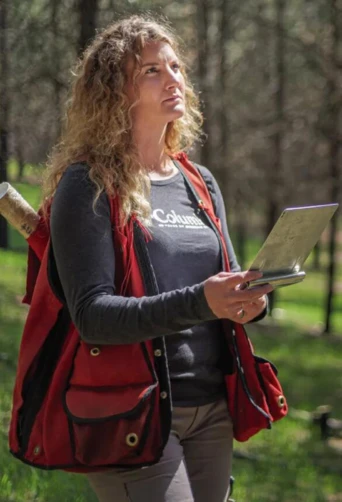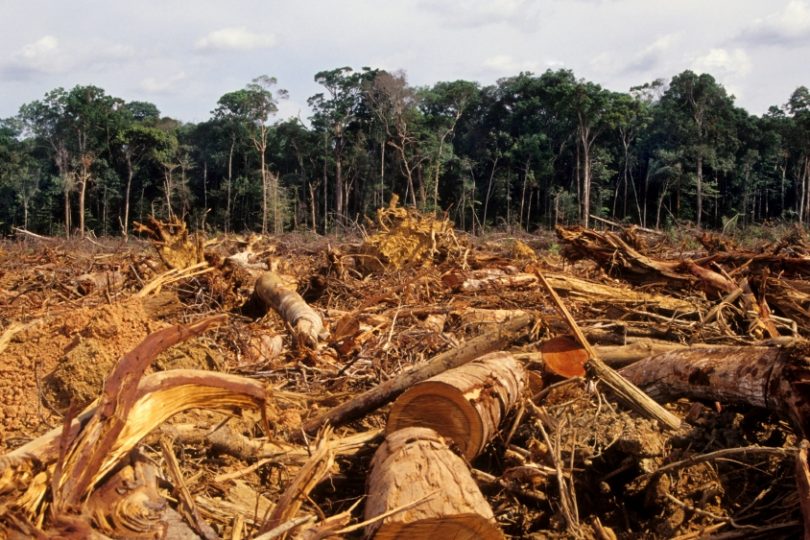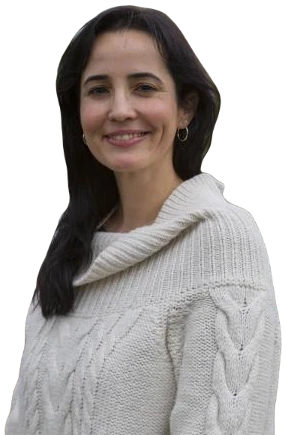Tropical forests, often hailed as the lungs of our planet, are facing an unprecedented crisis. While we’ve uncovered five key strategies for sustainable management, these practices are alarmingly absent at a scale commensurate with the gravity of the situation. The reasons behind this gap are complex, deeply entrenched, and underscore the urgency of the issue.
At the heart of the problem lies an economic paradox. The exploitation of tropical forests for their valuable timber resources offers immediate financial gains, tempting governments and corporations alike. Logging practices that prioritize short-term profits over long-term sustainability are pervasive, driven by the allure of quick cash flow.
Government corruption and lax enforcement of environmental regulations further exacerbate the issue. In many regions, the influence of powerful interests, whether through bribes or political connections, hampers effective oversight. Consequently, illegal logging operations thrive in the shadows, undermining responsible forest management.
Illegal logging and the subsequent trade in illicit timber have evolved into a global criminal enterprise. Organized crime syndicates capitalize on the lucrative timber market, engaging in activities that wreak havoc on tropical forests. Timber from illegal sources floods international markets, making it difficult to distinguish legally harvested wood from illicit sources.
In a disheartening twist, some corporations engage in greenwashing, presenting a façade of environmental responsibility while perpetuating unsustainable practices. Such companies benefit from the public perception of eco-friendliness, all while continuing to exploit tropical forests. This not only misleads consumers but also prolongs the crisis.
Beyond ecological consequences, this crisis has a profound human toll. Indigenous communities, often the rightful stewards of these forests, are displaced, disenfranchised, and subjected to human rights abuses. Sustainable forest management offers an alternative that respects the rights and livelihoods of these communities, yet this path remains underutilized.
The impact extends far beyond the immediate regions affected. Tropical forests, covering just 7% of the Earth’s land surface, harbor an astonishing 50% of the world’s plant and animal species. Deforestation and unsustainable logging contribute significantly to global greenhouse gas emissions, furthering climate change. Moreover, over 1.6 billion people depend on forests for their livelihoods, making responsible management crucial for poverty alleviation and community well-being.
In this article, we delve into the multifaceted challenges surrounding sustainable tropical forest management. While the solutions are at our fingertips, the hurdles are daunting. However, it’s essential that we confront these issues head-on, for the sake of our planet, its inhabitants, and future generations. The time for action is now, as we strive to transition from exploitation and degradation to responsible and sustainable forest management.
1: Enhancing Logging Practices for Sustainability
One of the fundamental aspects of sustainable tropical forest management is improving logging practices. When harvest operations are meticulously planned and executed by well-trained workers who are incentivized to employ lower-impact logging practices, the benefits are manifold.
Reducing Soil Erosion
Improved logging practices significantly contribute to reducing soil erosion. This is a critical aspect of maintaining the health of tropical forest ecosystems. By minimizing soil disturbance during logging activities, we can help preserve the fragile balance of the forest floor, ensuring that it can continue to support diverse plant and animal life. As a result, soil erosion is lessened, which is vital for the overall stability and health of the forest.
Enhancing Worker Safety
Another notable advantage of careful planning and training is the substantial decrease in worker injuries. When loggers are equipped with the knowledge and skills needed for responsible logging, they can safely navigate the challenging terrain and handle heavy machinery. This not only protects the workforce but also fosters a more sustainable and ethical logging industry.
Reducing Carbon Emissions
Perhaps one of the most compelling reasons to improve logging practices is the substantial reduction in carbon emissions. When compared to conventional logging, planned harvest operations with lower-impact techniques result in only half the carbon emissions.

This is a crucial step in mitigating climate change, as forests play a pivotal role in sequestering carbon dioxide. By minimizing emissions, we can contribute to global efforts to combat climate change while still harnessing the valuable resources of tropical forests.
Dr. Sarah Johnson, a leading expert in sustainable forestry, emphasizes the importance of this strategy, stating, “Effective logging practices not only benefit the environment but also the economy. By reducing soil erosion and carbon emissions, we ensure that tropical forests can continue to provide essential ecosystem services and contribute to our fight against climate change.”
2: Maximizing Wood Recovery for Sustainability
In our pursuit of sustainable tropical forest management, we must minimize waste and maximize the recovery of wood during harvesting and processing. This can be achieved through training and implementing efficient techniques.
Proper Tree Felling
One key aspect of reducing wood waste is proper tree felling. When trees are felled correctly, it results in fewer stumps and less damage to the surrounding environment. Low stumps are easier to extract, and they leave behind less waste. Moreover, this practice promotes forest regeneration, allowing new trees to grow in place of the harvested ones.
Minimizing Broken Logs
Another area where wood recovery can be improved is in log handling and transportation. Through training and skill development, workers can learn to handle logs more efficiently, reducing the number of broken logs during the harvesting and processing stages. This not only conserves wood resources but also reduces the financial losses associated with damaged logs.
Maximizing wood recovery isn’t just about conserving resources; it’s also economically advantageous. Dr. Maria Rodriguez, an economist specializing in forestry, notes, “Wasting less wood means more revenue for the logging industry and less pressure on forests. It’s a win-win situation for both business and the environment. Sustainable practices like these are essential for the long-term viability of the industry.”

3: Allowing Forests Time to Recover for Sustainable Timber Yields
To achieve long-term sustainability in tropical forest management, it’s crucial to allow forests the time to recover between harvests. This involves reducing the frequency of harvests and limiting the amount that can be extracted from a specific area. While these measures may appear to reduce short-term profits, they are essential for ensuring a continuous supply of timber in the future.
Reducing Harvest Frequency
One effective approach to sustaining timber yields is to increase the duration between harvests. By allowing forests more time to regenerate and grow, we can ensure that timber resources remain abundant in the long run. This approach not only benefits the environment but also supports the livelihoods of those who depend on the forest for their income.
Harvest Intensity Reduction
Another strategy is to reduce harvest intensity, which refers to the number of trees or the volume of timber harvested per unit area. This can be accomplished by increasing the distance between harvestable trees or by raising the minimum size of trees that can be felled. These measures may initially impact profitability, but they’re essential for preserving timber resources and preventing over-exploitation.
Carbon Emissions Reduction and Compensation
Importantly, these changes also contribute to the reduction of carbon emissions from managed forests. Forests play a critical role in sequestering carbon dioxide, and by allowing them to recover, we enhance their carbon sequestration potential. This opens opportunities for compensation from carbon market investors looking to offset their own emissions, thereby providing additional incentives for sustainable forest management.
Professor David Wong, a renowned forest ecologist, underscores the importance of this strategy, stating, “Giving forests the time they need to regenerate is a cornerstone of sustainable forestry. It not only safeguards our timber resources but also ensures that forests continue to serve as invaluable carbon sinks, aiding in our global efforts to combat climate change.”

4: Protecting Young Trees for Future Harvests
In forests that have been previously disturbed by logging, protecting, and fostering the growth of small trees is essential for maintaining sustainable timber yields. This practice is particularly significant in areas where young trees have been overshadowed or encumbered by woody vines known as lianas.
Enhancing Future Timber Yields
Liberating young trees from the grasp of lianas is a cost-effective way to bolster future timber yields. Lianas can stunt the growth of young trees, making them unsuitable for harvest in the future. By removing these obstacles, we can ensure that the next generation of timber is healthy and robust, ultimately benefiting the logging industry and the environment.
Accelerating Carbon Removal
Inarguably, protecting young trees and enabling their growth has a substantial impact on carbon removal from the atmosphere. Young trees are efficient carbon sequestration agents, and by nurturing them, we can double the rate at which carbon dioxide is removed from the atmosphere.
This not only contributes to climate change mitigation but also aligns with broader environmental conservation goals.
Dr. Laura Martinez-Suz, an expert in forest restoration, highlights the economic and ecological synergy of this strategy, stating, “Protecting young trees not only secures future timber supplies but also enhances forest health. It’s an investment in the long-term sustainability of both the logging industry and the ecosystems that rely on these forests.”

5: Afforestation and Enrichment Planting for Sustainable Growth
In areas where natural regeneration of commercial tree species is lacking, the planting of trees through enrichment planting programs can be a crucial strategy. When these planted trees receive consistent care and maintenance over several years, their growth rates and carbon sequestration potential can be substantial.
Promoting Afforestation
Afforestation, which involves planting trees in areas where forests have been depleted or are struggling to regenerate naturally, can be a powerful tool for sustainable forest management. By carefully selecting and planting commercial tree species, we don’t only replenish timber resources but also enhance the overall health and resilience of the forest ecosystem.
Carbon Benefits and Growth
One of the notable benefits of afforestation and enrichment planting is the significant increase in carbon sequestration rates. As these newly planted trees grow, they absorb and store carbon dioxide from the atmosphere, contributing to climate change mitigation. This proactive approach aligns with global efforts to combat rising carbon emissions and their adverse effects.
It’s essential to recognize that the carbon benefits derived from all five strategies discussed here are additional. In other words, these benefits would not have occurred without intervention. This underscores the importance of supporting responsible forest management as a legitimate land use within carbon markets.
Managed forestry not only has environmental advantages but also generates employment opportunities. It supports a stable workforce and provides jobs for professionals within the forestry sector. Conversely, carbon projects focused solely on stopping logging run the risk of displacing loggers to other areas without addressing the underlying issues.

We Must Transition to Responsible Forest Management
The transition from the historical exploitation and degradation of tropical forests to responsible forest management is a long-awaited necessity. This transformation requires collaborative efforts from governments, the private sector, and society at large.
Governments must play a vital role by enforcing existing laws and regulations. Neglecting this responsibility not only undermines environmental conservation but also deprives economies of crucial tax revenue. The prevalence of illegal timber keeps log prices artificially low, discouraging responsible practices.
Forest industries need to recognize the multifaceted benefits of investing in all aspects of forestry, including maintaining productive timber stands. This includes afforestation efforts, which offer a sustainable way to secure timber resources for the future.
Society also has a role to play by ensuring a supply of well-trained young foresters.
Overcoming misconceptions about forest management is crucial in attracting environmentally conscious individuals to the profession. Despite challenges in finding motivated professionals, investing in responsible forest management promises a triad of benefits: financial, environmental, and social.
In conclusion, the issues surrounding tropical forest management are complex and multifaceted. To shed light on the depth of this problem, consider the following facts:
- Tropical forests cover approximately 7% of the Earth’s land surface, but are home to around 50% of the world’s plant and animal species.
- Deforestation and unsustainable logging contribute to about 10% of global greenhouse gas emissions, exacerbating climate change.
- Over 1.6 billion people rely on forests for their livelihoods, making sustainable forest management critical for poverty alleviation and community well-being.
- Illegal logging accounts for up to 30% of the global timber trade, perpetuating environmental degradation and undermining legal and sustainable forest management efforts.
- The transition to responsible forest management not only conserves biodiversity and mitigates climate change but also supports a green economy by creating jobs and fostering long-term economic stability.
While the solutions are at our fingertips, the hurdles are daunting. However, it’s essential that we confront these issues head-on, for the sake of our planet, its inhabitants, and future generations.
More To Discover
- The Hidden Shadow Network Behind Deforestation in Indonesia’s Palm Oil Industry
- Vanishing Forests: Unveiling the Global Threats and Urgent Solutions (We Name Names)
- How Chinese Gold Mining is Ravaging Cambodia’s Endangered Wildlife Sanctuary And No One Will Stop Them
- Alarmingly High Deforestation for Rubber Plantations Surpasses Previous Estimates
While we all, hopefully, recognize the complexity but also the urgency of this issue, to accomplish enough to move the needle will require a global commitment. Governments and corporations that have spent decades greenwashing deforestation for palm oil, coffee, rubber, cocoa, and chicken feed, will need to change their ways and put their vast profits to good use.
As much as we would all like to see that happen, those of us at Dakoa are, unfortunately, not delusional enough to believe that such a scenario is likely. We can’t solve the problem, but we can continue bringing you real facts and call out greenwashing when we see it.




















